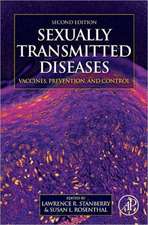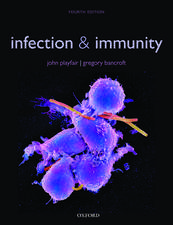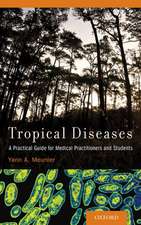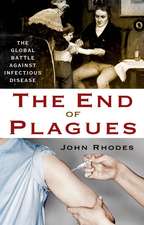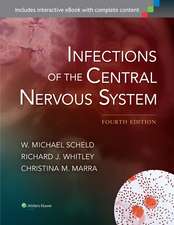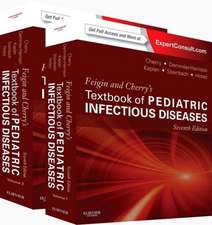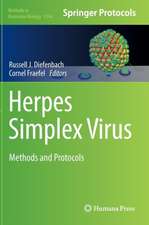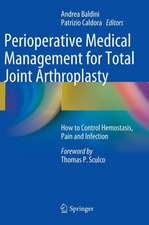Microbial Source Tracking: Methods, Applications, and Case Studies
Editat de Charles Hagedorn, Anicet R. Blanch, Valerie J. Harwooden Limba Engleză Hardback – 8 iun 2011
The three editors of the book, all with extensive MST expertise, have developed chapters and invited authors who reflect the rich diversity and truly international scope of MST. The unifying theme throughout the book is the design of more standardized approaches to MST that include performance criteria (regardless of method or organism), plus recommendations for field study design and MST implementation. The editors intend that this book will serve as a valuable reference for all those who are involved with
| Toate formatele și edițiile | Preț | Express |
|---|---|---|
| Paperback (1) | 1233.83 lei 6-8 săpt. | |
| Springer – 25 noi 2014 | 1233.83 lei 6-8 săpt. | |
| Hardback (1) | 1237.80 lei 6-8 săpt. | |
| Springer – 8 iun 2011 | 1237.80 lei 6-8 săpt. |
Preț: 1237.80 lei
Preț vechi: 1509.51 lei
-18% Nou
Puncte Express: 1857
Preț estimativ în valută:
236.85€ • 247.96$ • 195.98£
236.85€ • 247.96$ • 195.98£
Carte tipărită la comandă
Livrare economică 05-19 aprilie
Preluare comenzi: 021 569.72.76
Specificații
ISBN-13: 9781441993854
ISBN-10: 1441993851
Pagini: 656
Ilustrații: XIV, 642 p.
Dimensiuni: 155 x 235 x 39 mm
Greutate: 1.02 kg
Ediția:2011
Editura: Springer
Colecția Springer
Locul publicării:New York, NY, United States
ISBN-10: 1441993851
Pagini: 656
Ilustrații: XIV, 642 p.
Dimensiuni: 155 x 235 x 39 mm
Greutate: 1.02 kg
Ediția:2011
Editura: Springer
Colecția Springer
Locul publicării:New York, NY, United States
Public țintă
ResearchCuprins
Chapter 1: Overview.- Chapter 2: Performance Criteria.- Chapter 3: Library-dependent Source Tracking Methods.- Chapter 4: Library-Independent Source Tracking Methods.- Chapter 5: Viruses as Tracers of Fecal Contamination.- Chapter 6: Phage Methods.- Chapter 7: Pathogenic Protozoa.- Chapter 8: Chemical-Based Fecal Source Tracking Methods.- Chapter 9: Statistical Approaches for Modeling in Microbial Source Tracking.- Chapter 10: Mitochondrial DNA as Source Tracking Markers of Fecal Contamination.- Chapter 11: Community Analysis-Based Methods.- Chapter 12: Public Perception of and Public Participation in Microbial Source Tracking.- Chapter 13: Use of Microbial Source Tracking in the Legal Arena: Benefits and Challenges.- Chapter 14: Applications of Microbial Source Tracking in the TMDL Process.- Chapter 15: Relating MST Results to Fecal Indicator Bacteria, Pathogens, and Standards.- Chapter 16: Minimizing Microbial Source Tracking at All Costs.- Chapter 17: Environmental Persistence and Naturalization of Fecal Indicator Organisms.- Chapter 18: Agricultural and Rural Watersheds.- Chapter 19: Case Studies of Urban and Suburban Watersheds.- Chapter 20: Beaches and Coastal Environmenta.- Chapter 21: Source tracking in Australia and New Zealand: Case Studies.- Chapter 22: Microbial Source Tracking in China and Developing Nations.- Chapter 23: A National Security Perspective of Microbial Source Tracking.- Chapter 24: Applications of Quantitative Microbial Source Tracking (QMST) and Quantitative Microbial Risk Assessment (QMRA).- Chapter 25: Food Safety and Implications for Microbial Source Tracking.- Chapter 26: Training Future Scientists: Teaching Microbial Source Tracking (MST) to Undergraduates.- Index.
Textul de pe ultima copertă
Microbial source tracking (MST) is a sub-discipline of environmental microbiology that has emerged and grown in response to the inability of conventional fecal indicator bacteria (such as Escherichia coli and enterococci) to discriminate among the many possible sources of fecal pollution in environmental waters. MST’s current and potential applications range from beach monitoring to total maximum daily load (TMDL) assessment of pollution sources, which in turn will mediate greater protection of public health and improvement of environmental water quality.
This comprehensive book taps the expertise of many of the leading research scientists from an international assemblage, and considers a geographic range from the U.S. to China, New Zealand, Australia, and the EU. It addresses subjects ranging from the fundamentals of MST methods, their pros and cons, and performance criteria necessary during method development, and application, to case studies from beach, agricultural, and urban watersheds. Separate chapters focus on viral-, protozoan-, chemical-, and mitochondrial DNA-based methods. Specialized topics include legal and TMDL-associated issues, public perceptions, statistical analysis, food safety, national security, and using MST in undergraduate education.
The audience for this work will include advanced undergraduate and graduate students from scientific and engineering disciplines who are interested in microbial water quality, research scientists, regulators, and others interested in the fundamentals, applications and interpretation of MST methods and data.
This comprehensive book taps the expertise of many of the leading research scientists from an international assemblage, and considers a geographic range from the U.S. to China, New Zealand, Australia, and the EU. It addresses subjects ranging from the fundamentals of MST methods, their pros and cons, and performance criteria necessary during method development, and application, to case studies from beach, agricultural, and urban watersheds. Separate chapters focus on viral-, protozoan-, chemical-, and mitochondrial DNA-based methods. Specialized topics include legal and TMDL-associated issues, public perceptions, statistical analysis, food safety, national security, and using MST in undergraduate education.
The audience for this work will include advanced undergraduate and graduate students from scientific and engineering disciplines who are interested in microbial water quality, research scientists, regulators, and others interested in the fundamentals, applications and interpretation of MST methods and data.
Caracteristici
This comprehensive book taps the expertise of many of the leading research scientists from an international assemblage, and considers a geographic range from the U.S. to China, New Zealand, Australia, and the EU
It addresses subjects ranging from the fundamentals of MST methods, their pros and cons, and performance criteria necessary during method development, and application, to case studies from beach, agricultural, and urban watersheds
This is most comprehensive book on this subject in years
Includes supplementary material: sn.pub/extras
It addresses subjects ranging from the fundamentals of MST methods, their pros and cons, and performance criteria necessary during method development, and application, to case studies from beach, agricultural, and urban watersheds
This is most comprehensive book on this subject in years
Includes supplementary material: sn.pub/extras


